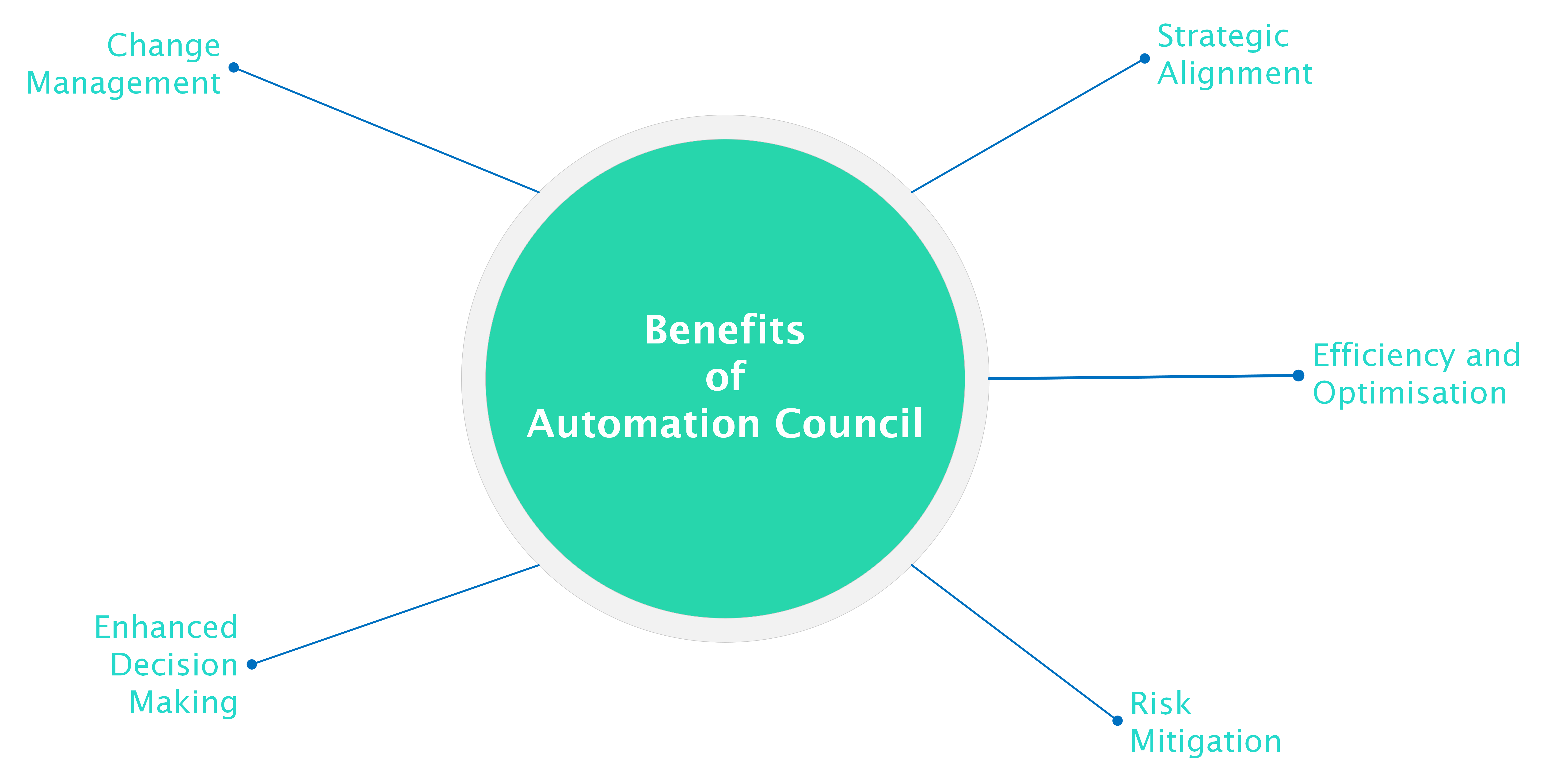Automation Council
In the digital age, automation has emerged as a transformative force, revolutionizing how businesses operate and enhancing productivity and efficiency. However, as automation technologies advance, it becomes crucial for companies to establish effective governance and oversight mechanisms to ensure that automation aligns with organizational goals, avoids potential pitfalls, and maximizes its benefits.
This is where the concept of an Automation Council comes into play. An Automation Council serves as a strategic body that guides and governs the implementation of automation in business processes, providing a structured approach to harnessing its potential while mitigating risks.
Understanding the Automation Council:
The Automation Council is a dedicated group within an organization that consists of key stakeholders from various departments, including executives, managers, subject matter experts, and IT professionals.
Its primary purpose is to set the direction, policies, and standards for automation initiatives throughout the company. By establishing this council, businesses can create a unified and coherent approach to automation, ensuring that decisions regarding automation projects are well-informed and aligned with the organization’s overall strategy.
Roles and Responsibilities:

Strategic Planning: The Automation Council takes on the responsibility of developing a comprehensive automation strategy aligned with the company’s goals and objectives. This involves identifying potential areas for automation, prioritizing initiatives, and determining the expected benefits and risks associated with each project.
Governance and Policy Development: The council establishes guidelines, standards, and best practices for automation implementation. It ensures that automation initiatives adhere to regulatory requirements, ethical considerations, and data privacy standards. Additionally, it sets policies for monitoring, evaluating, and auditing automation processes to maintain transparency and accountability.
Resource Allocation: The council collaborates with relevant departments to allocate resources effectively for automation projects. It assesses budgetary requirements, evaluates the need for external expertise, and facilitates resource allocation to ensure the successful execution of automation initiatives.
Risk Management: Automation can introduce potential risks such as data breaches, system failures, or job displacement. The Automation Council works to identify and address these risks proactively. It establishes risk management frameworks, monitors the impact of automation on the workforce, and develops strategies to mitigate any adverse effects.
Collaboration and Communication: The council fosters collaboration and communication among different stakeholders involved in automation. It facilitates knowledge sharing, encourages cross-departmental cooperation, and ensures that automation projects align with the needs and expectations of end-users.
Benefits of an Automation Council:

The implementation of an Automation Council offers several benefits to organizations:
Strategic Alignment: The council ensures that automation initiatives align with the company’s strategic objectives, avoiding ad-hoc and fragmented approaches to automation.
Efficiency and Optimization: By providing a centralized framework, the council enables businesses to identify redundant processes, streamline workflows, and optimize resource allocation, resulting in improved operational efficiency.
Risk Mitigation: Through its governance and risk management functions, the council helps businesses anticipate and address potential risks associated with automation, safeguarding the organization’s reputation and data security.
Enhanced Decision Making: The council brings together diverse perspectives and expertise, enabling informed decision-making on automation projects. This ensures that investments in automation deliver the desired returns.
Change Management: Automation often requires significant changes to workflows and employee roles. The council plays a vital role in managing this transformation, facilitating effective change management and supporting employees through upskilling and reskilling initiatives.
Conclusion:
The Automation Council acts as a crucial enabler for organizations aiming to leverage automation effectively. By guiding and governing automation in business processes, this strategic body helps companies maximize the benefits of automation while mitigating risks.
Through strategic planning, governance, resource allocation, risk management, and collaboration, the council creates a structured and systematic approach to automation implementation, ensuring that it aligns with organizational objectives and drives long-term.